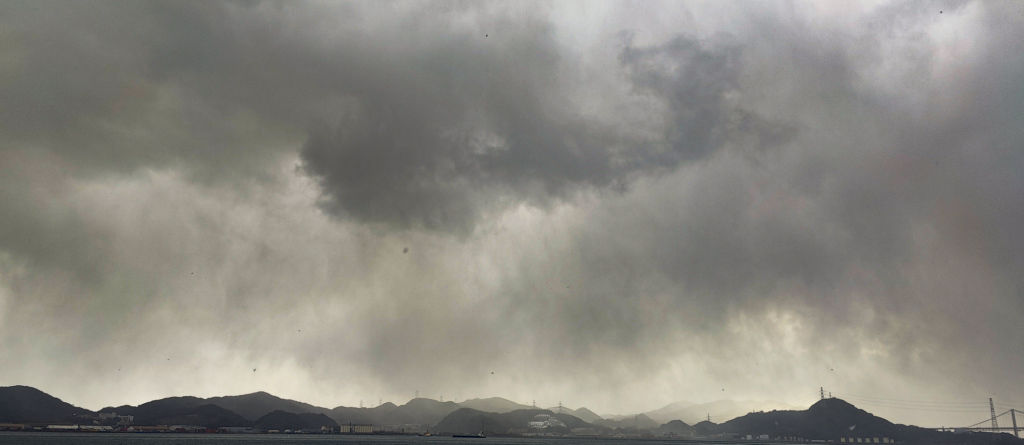As it is the first post of the year, can I just say, Happy 2024!! ^_^

One of my 2023 resolutions was to move to Japan, and it feels surreal to be currently trying to come up with decent resolutions for 2024 here in a beautiful city in Yamaguchi, surrounded by infinite rolling mountains, lots of nature, and the sea. It feels like I am living in an incredible postcard. About this country, which I keep growing fond of every day, so much is new and interesting to me. So how about starting off the new year on the blog with the first in the new series, “Is This Japanese?” Before I get to the gist of things, I think it is worth mentioning that though I have spent some time in Tokyo, Kyoto and Hiroshima, the views expressed here were chiefly experienced in my prefecture of residence, Yamaguchi! or if you please, The Mouth of the Mountains.
On the bus, which by the way, you enter from the BACK and exit from the front, after you pay with your IC card or coins, I often stand even if there are several free seats. Why? If someone is occupying one seat of a two seater bench, it is best to cross off the entire bench as occupied. Mind you, some will sit next to another—which, in my opinion, is the sensible thing to do––but most of the time people stand. I remember one Saturday, while quite new to the unspoken rules of the bus, I boarded one and felt shocked that though several seats were unoccupied many passengers stood. Being the New Yorker that I am, I pushed my way through the standing lot to sit next to a boy? a man? He could be anywhere from 16 to 35. Oh but I am not sure I would be able to do such a thing so simply again here. The poor dude froze. In this awkward position with his palms cupping his knees rather stiffly, he sat frozen next to me. For about 25 minutes, the duration of my trip, I suffered his awkwardness painfully and regretfully.
Meanwhile, in front of me in the same bus, an Obaasan was almost begging a girl? woman? to sit next to her because the bus was quite full and the girl/woman holding on tightly to a hand grip in the bus, was often on the verge of toppling over. But the Obaasan was refused and it looked to me like her feelings were hurt. However, when two seats became available nearing the about-to-topple-over-at-any-instant girl/woman, she immediately sat down with her traveling partner. It’s been several months now since I have been living here and I have observed this over and over and over again. Most people won’t sit next to a stranger. I mentioned this observation to a native and she said the habit of not sitting next to another person is a trend that started with COVID.
But sitting next to another on the bus is not as awkward as what could be called the ghost treatment. This has happened to me several times and even now that it is no longer so shocking and even somewhat expected, it still stings. The usual serving is dished when one walks past another and greets them and they act like you are thin air—there is this performance of looking through one as though one lacks form. Or the native might look directly ahead and in so stiff a manner that one feels the full force of a refusal to be acknowledged. It doesn’t often happen but when it does, the native pretends they cannot see or hear you, even though their whole body show a strong alertness to your presence. Even though there are, as is often the case, just you and them in the vicinity. I have experienced this attitude a couple of times but the one that almost reduced me to tears was an instance when I tried to say good morning to a middle school boy. I wanted to say Ohayougozaimasu, but for some reason, the greeting just disappeared from my memory. And I stood right in front of him, smiling and desperately trying to remember the greeting and already feeling foolish for being unsuccessful. I finally managed it but when I did, it also dawned on me that he had been ignoring me the entire time. Because I was so focused on recalling the greeting, I had not been conscious of his attitude. We were the only two people at the bus stop but he acted as if I was thin air. His eyes were kept fixed onto something in the distance. I was shocked and wounded. Recently though, I observed a similar condition. The only difference was that both the participants were Japanese and both were students from the same school. Is it really just shyness?
Before I came to Japan, I watched hundreds of videos on various things related to the country and its people. One of my favorite documentaries had been NHK’s Japanology. I dare say I have watched most of them. I can’t recall anyone mentioning or explaining this attitude. But I realized that I was not imagining things when I came across the flowing passage in Japanese Language and Culture for Businesss and Travel (1937) by Kyoko Hijirida and Muneo Yoshikawa:
Domain 3 is characterized by actions toward those who are defined as soto (outsiders). The outsiders are seen by the self as strangers to whom there is no responsibility or social commitment . . . in this domain one is not bound by “face,” (domain 2) thus being able to afford shamelessness.
By the way domain 1, uchi, is described in the same book as the relationship one shares with family and close friends. A state where the individual is more likely to practice honne, that is share their true thoughts and feelings and act more familiar. Domain 2, is the sphere of tatemae, an agreeable or perhaps diplomatic facade that one wears around acquaintances, colleagues, superiors, etc, to maintain harmony.
Interesting, no? Have you ever experienced any of these attitudes in Japan or elsewhere? Well, it wouldn’t be fair to leave out the fact that I have received far more kindness than unkindness, and much more sensitivity than insensitivity here.
Cheers!
J. A. O


